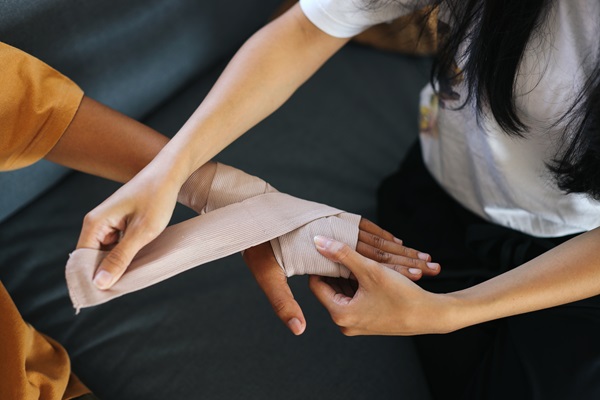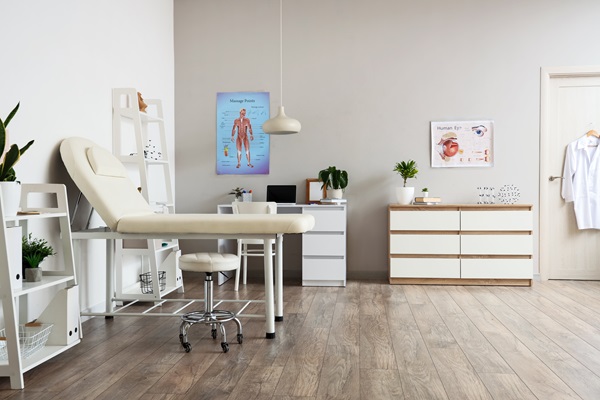Navigating Lacerations: When To Seek Medical Attention

Minor lacerations, or cuts and scrapes, are a common part of everyday life. Many minor injuries can be treated at home with basic first aid supplies and over-the-counter antibiotics. However, there are situations where you need to seek professional medical attention. This guide will help you navigate the steps you should take to care for a laceration at home and know when it is time to go to a healthcare professional.
Understanding lacerations
Lacerations occur when the skin and sometimes underlying tissues are cut or torn. These injuries can occur anywhere on the body. They can result from cooking incidents, sports injuries, falls, or accidents involving sharp objects. The severity of a laceration depends on its depth, length, and location. People can treat many minor cuts and scrapes at home with a standard first-aid kit. However, more severe lacerations require professional medical attention in order to prevent extreme blood loss, infection, and other complications.
Signs and symptoms of a laceration
Lacerations vary in shape and size. Open skin may appear as a cut, tear, or gash. Patients with lacerations may experience the following symptoms:
- Pain or discomfort
- Bleeding
- Bruising
- Numbness
- Swelling
- Limited movement in the area below the laceration
Some areas of the body bleed more than others. For example, scalp lacerations tend to bleed a lot. A laceration may also have edges that are close together or far apart.
How to manage a laceration
Regardless of the severity of the wound, there are essential steps patients should take immediately after sustaining a laceration. They should stay calm to properly assess the injury; panic can worsen the situation. Be sure to take a deep breath to relax before tending to the wound.
The next step is to stop the bleeding. Apply gentle pressure to the laceration with a clean cloth or bandage. Elevate the injured area above heart level when possible. When the bleeding is under control, clean the wound with water. Do not use hydrogen peroxide or iodine. These can damage the tissue immediately after the injury.
Once the wound is clean, use an antiseptic ointment to prevent infection. Then, cover it with a sterile bandage or dressing to protect the laceration. This can prevent bacteria and debris from entering the wound.
When to seek medical attention
Many minor lacerations can be properly managed at home. However, certain situations require professional medical care. Here are some signs indicating that immediate medical attention is necessary.
Severe bleeding
Severe or excessive bleeding is a sign that the individual should seek immediate medical attention. If the bleeding does not stop after applying firm pressure for 10 to 15 minutes, it is crucial to seek medical care. Severe blood loss may indicate a damaged artery or vein, requiring stitches or medical intervention to close the wound safely.
Deep or large wounds
Lacerations that are deeper than a quarter-inch or longer than an inch or affect underlying tissues — muscles, tendons, or bones — need professional assessment and treatment. These wounds often require stitches, staples, or other closure techniques to help the laceration heal and prevent infection. While stitches may decrease the amount of scarring the patient has, some lacerations may heal better with other methods, such as medical tape or glue.
Wounds with foreign objects
If debris, glass, or a foreign object is embedded in the wound, the patient should not try to remove it themselves. This may cause further damage or introduce infection to the wound. Seek medical attention to have the object safely removed and the wound properly cleaned.
Facial or joint lacerations
Lacerations on the face or over joints need special care to heal properly and preserve function. Patients with facial lacerations may require stitches to minimize scarring. Joint injuries can affect the patient’s movement and may need specialized treatment, particularly if other soft tissues like muscles or tendons are injured.
Animal bites or contaminated lacerations
Animal bites are prone to infection due to bacteria in the mouth. A healthcare professional should evaluate any laceration caused by an animal or even a human bite. Additionally, contaminated lacerations, such as wounds with dirt, debris, or substances, can increase the risk of infection and interrupt the healing process.
Risk of tetanus
If the laceration is caused by a dirty or rusty object and the patient is unsure when they last received a tetanus vaccine, they should consult a healthcare provider. Tetanus is a bacterial infection that can cause serious health complications, such as painful muscle contractions in the jaw and neck and difficulty breathing. Fortunately, healthcare professionals can administer a tetanus shot to prevent future health issues.
Signs of infection
Even the smallest of lacerations are at risk for infection. Watch for the following signs:
- Experiencing fever or chills
- Seeing redness or swelling around the laceration
- Feeling warmth from the laceration
- Noticing red streaks on the skin coming from the laceration
- Bad-smelling white or yellow drainage from the laceration
- Worsening pain, even after professional medical care
These signs may indicate a spreading infection that requires immediate medical attention.
Seek professional care to prevent future complications
Lacerations are common injuries that are expected in everyday life. While minor cuts can typically be treated at home, it is important to know when to seek medical attention to help the wound heal and protect your overall health. If you are unsure about the severity of a recent or old wound, always err on the side of caution and consult a medical provider. Call our office to learn more or to schedule an appointment.
Request an appointment here: https://tx-urgentcare.com or call Texas Urgent Care & Imaging Center at (832) 941-1894 for an appointment in our New Caney office.
Check out what others are saying about our services on Yelp: Lacerations in New Caney, TX.
Recent Posts
Walk-in clinic provide convenient, accessible health care for non-emergency medical needs, making it an ideal choice when immediate attention is necessary. Understanding when to visit a clinic can help patients save time, avoid unnecessary trips to the emergency room, and receive quality care for their health concerns. These clinics handle various issues, offering fast, professional…
Walk-in clinics provide minor illness treatment for patients seeking quick and effective healthcare to address their symptoms. These accessible facilities address non-emergency medical concerns without the need to wait days for the next available appointment. The following guide will review some of the most common minor illness treatments offered at walk-in clinics.Respiratory tract infections (RTIs)…
Ultrasounds are non-invasive diagnostic tools used in urgent care and primary care settings to assess various medical conditions. With these images, healthcare providers can identify and evaluate potential health concerns. Understanding when ultrasounds are necessary and what to expect during them can empower patients to make informed decisions about their care.An ultrasound diagnostic scan uses…
A pregnancy testing is one of the most effective ways to confirm pregnancy by detecting the hormone human chorionic gonadotropin (hCG) in urine or blood. In order to produce reliable results, it is important to understand the accuracy, timing, and different options of tests. While many people rely on over-the-counter pregnancy tests, it is important…


